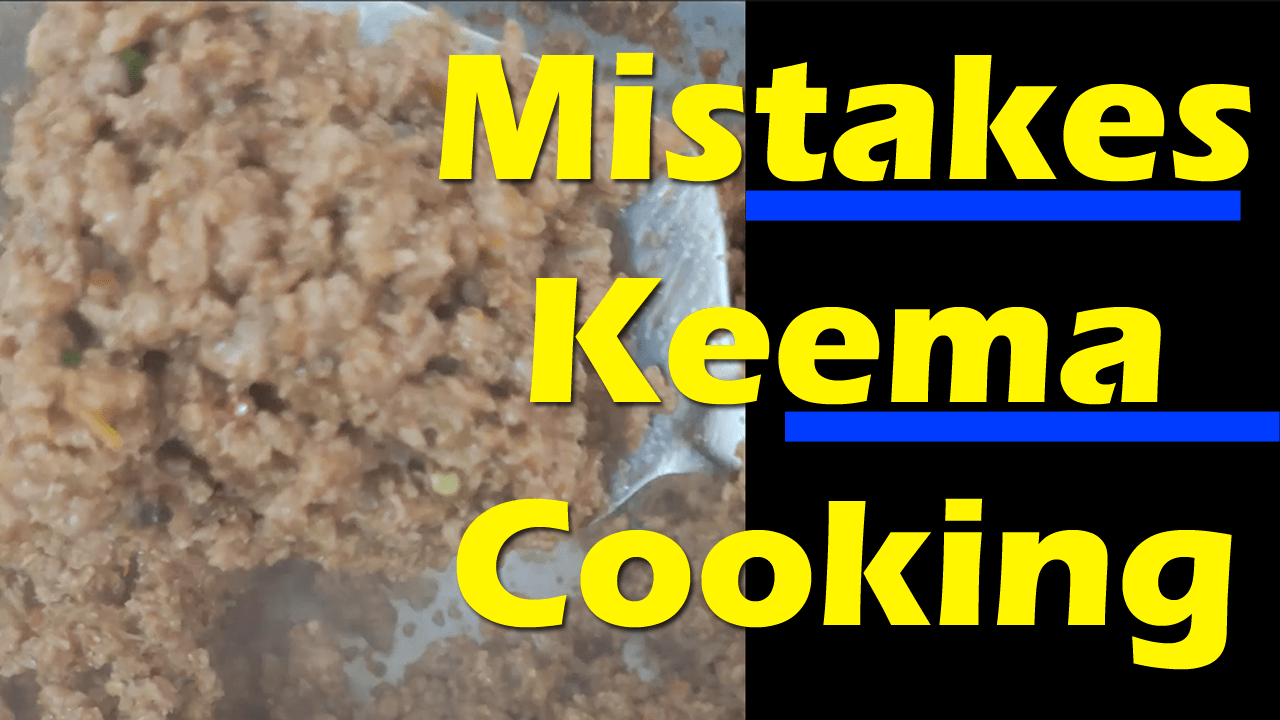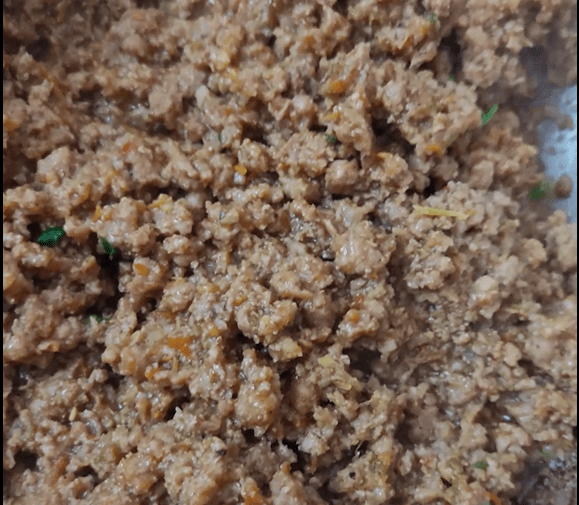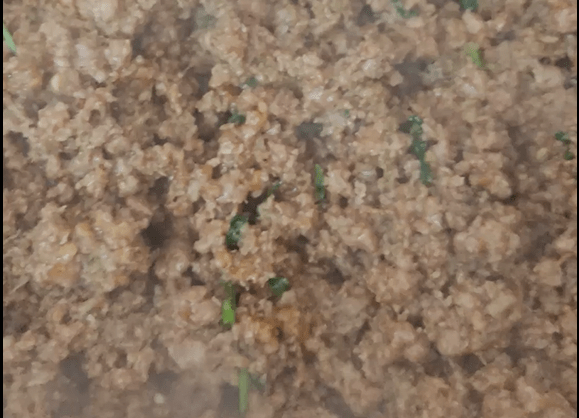Today, we will explain how beef keema’s cooking mistakes were fixed while looking at yummy and delicious dishes to serve over the weekend with your family.
Introduction cooking mistakes fixed
- Brief overview of Beef Keema
- Importance of understanding common mistakes in cooking it

Section 1: Choosing the Wrong Type of Meat
- The significance of selecting the right cut of beef
- Mistake: Using meat that is too lean or too fatty
- Explanation of ideal fat content for Keema
Section 2: Inadequate Spicing (cooking mistakes fixed)
- Common mistakes in spicing (too little or too much)
- The importance of balancing spices
- How to properly toast spices for maximum flavor
Section 3: Overcooking or Undercooking the Meat (Cooking Mistakes Fixed)
- How to recognize when Keema is perfectly cooked
- Consequences of overcooking (dry, tough meat)
- Consequences of undercooking (greasy, raw taste)
- Tips for achieving the perfect texture
Section 4: Improper Use of Onions (Cooking Mistakes Fixed)
- The role of onions in Beef Keema
- Mistake: Adding too many or too few onions
- How to properly caramelize onions for a rich flavor
Section 5: Neglecting the Aromatics (Cooking Mistakes Fixed)
- Importance of garlic, ginger, and other aromatics
- Mistake: Not cooking them long enough or adding them too late
- Tips for layering flavors effectively
Section 6: Not Deglazing the Pan (Cooking Mistakes Fixed)
- Explanation of deglazing and its importance in developing flavor
- Mistake: Skipping this step leads to lack of depth in taste
- How to deglaze properly using water, broth, or wine
Section 7: Failing to Simmer the Keema Properly (Cooking Mistakes Fixed)
- The importance of slow cooking
- Mistake: Rushing the process leading to tough meat and undeveloped flavors
- Techniques for low and slow cooking
Section 8: Incorrect Use of Tomatoes (Cooking Mistakes Fixed)
- How tomatoes impact the texture and taste of Keema
- Mistake: Using too much or too little tomato
- Tips for adding tomatoes without overpowering the dish
Section 9: Inconsistent Texture (Cooking Mistakes Fixed)
- The importance of achieving a consistent texture
- Mistake: Not breaking up the meat enough
- How to achieve a smooth, uniform Keema
Section 10: Not Letting the Keema Rest (Cooking Mistakes Fixed)
- Why resting time is essential for flavor development
- Mistake: Serving immediately after cooking
- How long to let Keema rest for optimal taste
Section 11: Serving Mistakes (Cooking Mistakes Fixed)
- Common serving mistakes (e.g., serving with the wrong accompaniments)
- Tips for pairing Keema with sides for a balanced meal
- How to garnish Keema for a professional presentation

Conclusion
- Recap of common mistakes
- Final tips for perfecting Beef Keema
- Encouragement to experiment and make the dish your own
Ingredients
The Core Components
- Ground Beef: Discuss the importance of choosing the right meat, including the fat content for a juicy, flavorful dish.
- Onions: How the size and cooking technique of onions influence the taste.
- Garlic and Ginger: Their role in enhancing the flavor profile.
- Tomatoes: The balancing act between acidity and sweetness.
The Spice Mix
- Detailed list of spices (e.g., cumin, coriander, turmeric, garam masala).
- The importance of freshly ground spices versus pre-packaged ones.
- How to customize the spice mix according to taste or regional variations.
Optional Ingredients
- Peas, potatoes, or other vegetables: When and how to add them to the Keema.
- Fresh herbs like cilantro or mint: Their role in garnishing and flavor enhancement.
- Optional additions like yogurt or cream for a richer texture.
Step-by-Step Cooking Instructions
Preparation
- How to properly prepare the ingredients before cooking (e.g., chopping onions, grating ginger).
- Tips on marinating the beef for extra flavor, if desired.
Cooking the Onions
- Detailed instructions on caramelizing onions to achieve the perfect sweetness.
- Common mistakes to avoid, such as over-browning or undercooking.
Browning the Beef
- The importance of browning the ground beef properly for depth of flavor.
- How to ensure even browning without overcooking.
- Tips for breaking up the meat to achieve a uniform texture.
Building the Flavor Base
- Adding garlic, ginger, and spices: Timing and techniques for maximizing flavor.
- Deglazing the pan: Why this step is crucial and how to do it effectively.
Simmering and Final Cooking
- The importance of simmering the Keema on low heat for flavor development.
- How long to cook and how to tell when it’s done.
- Tips for adjusting the consistency, whether you prefer a dry or slightly saucy Keema.
Cooking Tips and Common Mistakes
Balancing Flavors
- How to taste and adjust seasoning throughout the cooking process.
- Fixing common mistakes, such as over-spicing or under-seasoning.
Achieving the Right Texture
- Tips for avoiding a dry or greasy Keema.
- How to make the dish more or less spicy, based on personal preference.
Serving and Storing Tips
- Best practices for serving Beef Keema: what to pair it with, how to plate it.
- How to store leftovers and reheat them without losing flavor or texture.
- Freezing Keema: Tips for making it in bulk and freezing for later use.

Serving Suggestions
Traditional Accompaniments
- What to serve with Beef Keema: naan, rice, parathas, or roti.
- Simple salad or raita recipes that complement the dish.
Modern Twists
- Ideas for incorporating Beef Keema into other dishes, such as wraps, tacos, or stuffed peppers.
- How to use Keema as a filling for samosas or pies.
Cultural and Personal Context
The Cultural Significance of Keema
- How Beef Keema is enjoyed in different regions of South Asia.
- The role of Keema in festive and family gatherings.
You can read our Articles and This Cooking Recipe videos on our following Social Media Link:
Medium: The Beef Keema Recipe
YouTube Shorts:
https://youtube.com/shorts/U_LbOt5O8uQ?feature=sharedConclusion
- Recap of Key Points
- A summary of what makes this Beef Keema recipe unique and flavorful.
- Final tips for those trying the recipe for the first time.